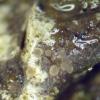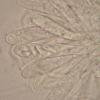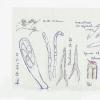
20-12-2025 23:08
Patrice TANCHAUDBonsoir, récolte sur sol sablonneux dans l'arri�

21-12-2025 09:32
Hello.A tiny ascomycete found embedded in wood in

20-12-2025 15:47
Mirek GrycHi.These grew on pine wood that was heavily covere

18-12-2025 21:17
Pol DebaenstThe identification took me to Byssonectria deformi

15-12-2025 07:09
 Danny Newman
Danny Newman
indet. Rutstroemiaceae sp. on unk. fallen leavesMc

19-12-2025 10:10
Patrice TANCHAUDBonjour, récolte réalisée en milieu dunaire, a

18-12-2025 17:23
 Bruno Coué
Bruno Coué
Bonjour,je serais heureux d'avoir votre avis sur c
Urceolella
Elisabeth Stöckli,
08-06-2016 22:51
Trouvé au sol, sur feuilles de plante inconnue, apothécies sessiles, 0.15-0.2mm, surface externe couverte de poils, asques 55-62 9-11µm, octosporés, IKI-, spores 13-16x2.6-3µm, paraphyses simples 2-2.5µm, poils réfringents.
Merci d'avance pour votre aide.
Elisabeth
Hans-Otto Baral,
09-06-2016 09:07

Re : Urceolella
Very interesting! This would need some further tests:
-Does the glassy substance of the hars disappear in 5-10% KOH? I assume so, at least when shortly heated over a flame.
-Is the ascus apex thick-walled in the dead state?
-No free spores seen and measured?
I am sure you used Lugol, because there are two similar species, Naevia diaphana and Hyalopeziza raripila, which both have a hemiamyloid (pure red) apical ring, though sometimes almost negative.
Zotto
-Does the glassy substance of the hars disappear in 5-10% KOH? I assume so, at least when shortly heated over a flame.
-Is the ascus apex thick-walled in the dead state?
-No free spores seen and measured?
I am sure you used Lugol, because there are two similar species, Naevia diaphana and Hyalopeziza raripila, which both have a hemiamyloid (pure red) apical ring, though sometimes almost negative.
Zotto
Elisabeth Stöckli,
11-06-2016 13:44
Hans-Otto Baral,
11-06-2016 16:54

Re : Urceolella
Prima, dann ist der Fund doch noch gerettet :-)
Diese Art und die diaphana stehen auf meiner Wunschliste ganz oben, was Sequenzierung anbelangt. Es ist nämlich nicht klar, ob die zu den Hyaloscyphaceen oder den Naevioideen gehören, oder sonstwo hin.
Vermutlich hast du den Pilz getrocknet. Ich vermute sehr, dass Timo Kosonen großes Interesse hätte. Glashaarpilze sind ja das Steckenpferd von Seppo Huhtinen. Ich kann ja mal fragen, ob sie so eine Art schon hatten.
Viele Grüße
Zotto
Diese Art und die diaphana stehen auf meiner Wunschliste ganz oben, was Sequenzierung anbelangt. Es ist nämlich nicht klar, ob die zu den Hyaloscyphaceen oder den Naevioideen gehören, oder sonstwo hin.
Vermutlich hast du den Pilz getrocknet. Ich vermute sehr, dass Timo Kosonen großes Interesse hätte. Glashaarpilze sind ja das Steckenpferd von Seppo Huhtinen. Ich kann ja mal fragen, ob sie so eine Art schon hatten.
Viele Grüße
Zotto









